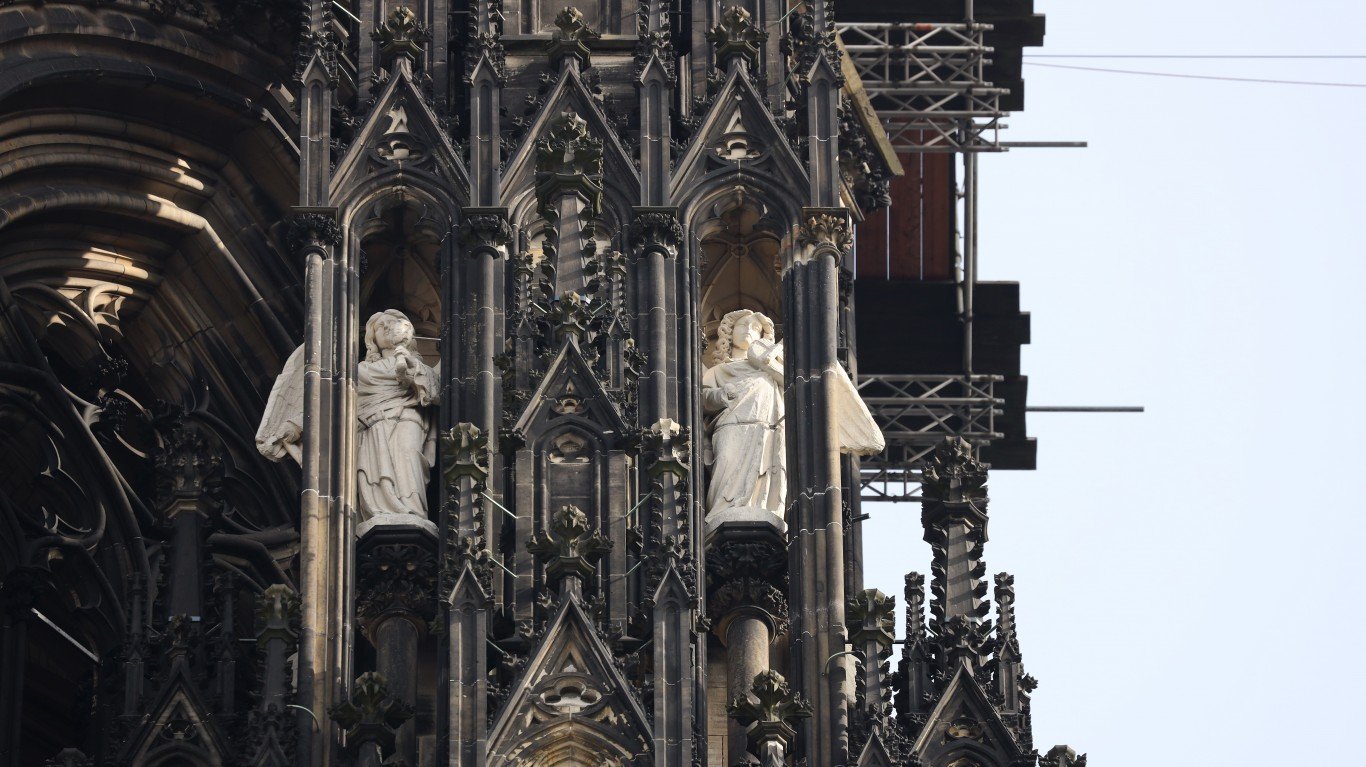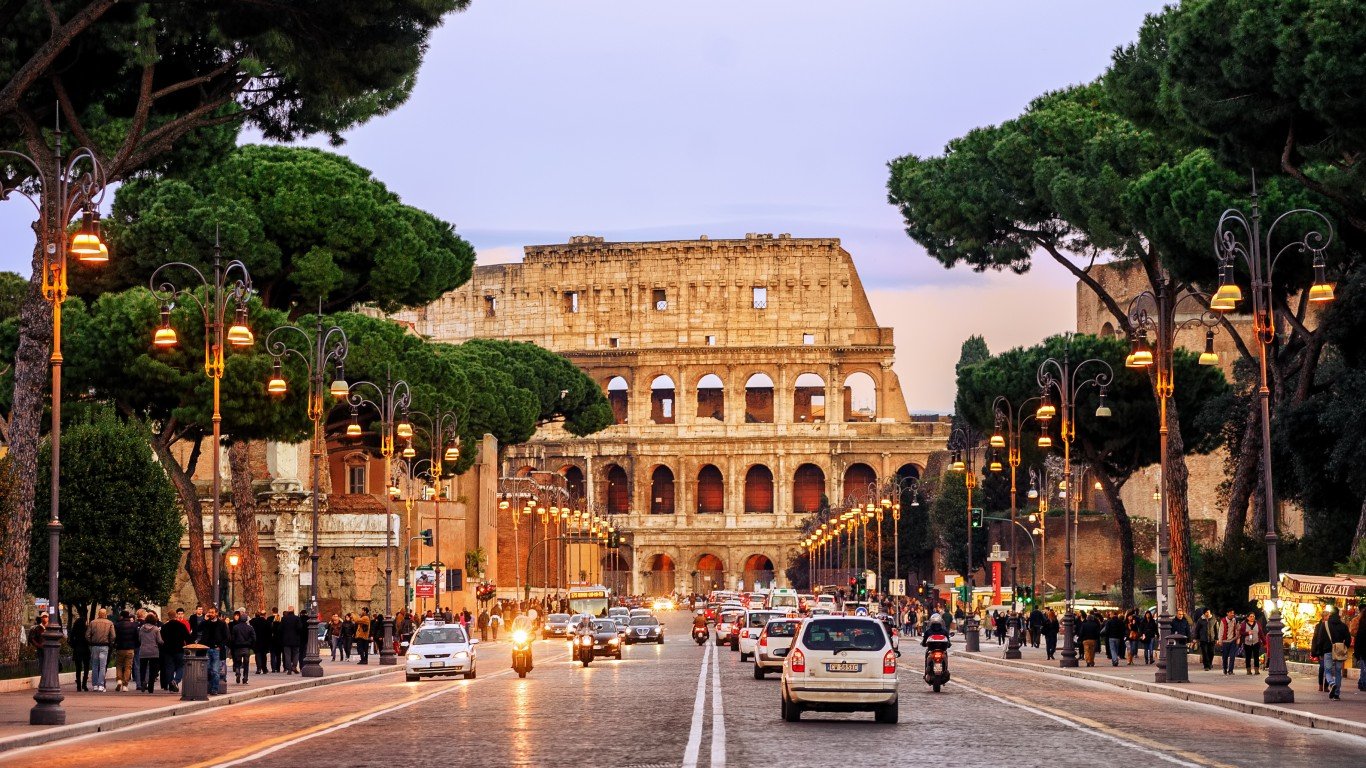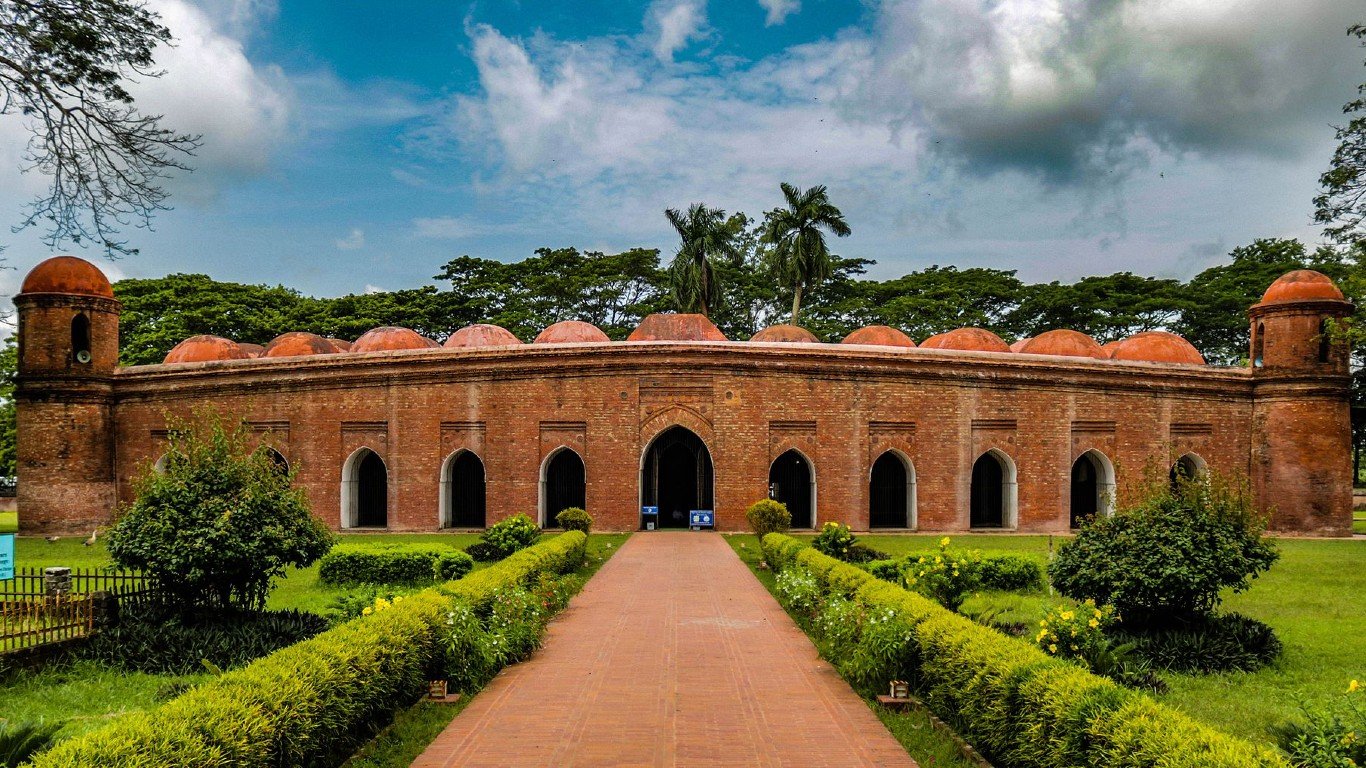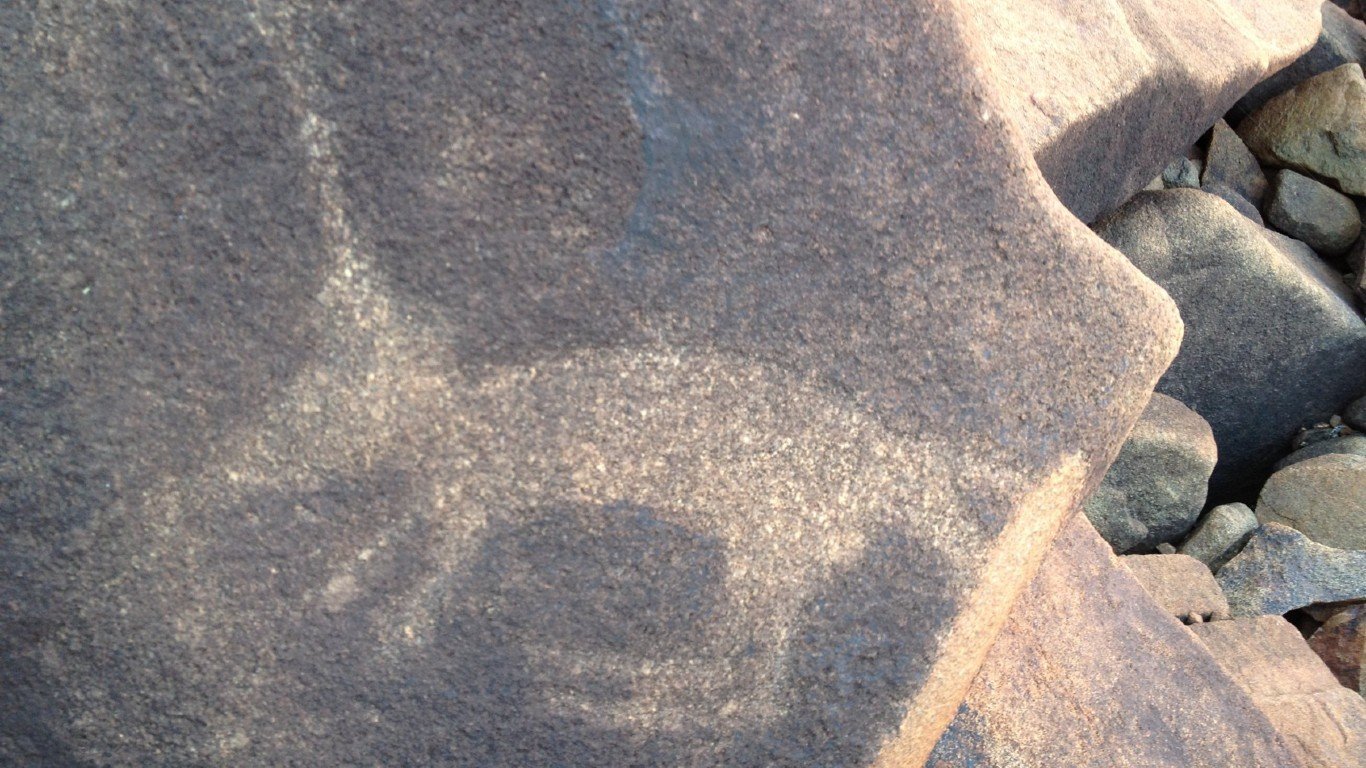Ancient Village of Bagerhut
> Location: Bangladesh
In the famously vulnerable coastal region of Bangladesh, an ancient city is showing signs of climate change damage. Bagerhut is a 50 square kilometer UNESCO World Heritage site filled with mosques, bridges, mausoleums, and other structures built in the Bengal Sultanate of the 15th century. Vulnerable to the same storms and flooding that is displacing village populations along the coast, the longer-term and more devastating threat is sea level rise. Already, salt intrusion is weakening the base of the city’s largest and most famous building, the Nine Dome Mosque.

Cologne Cathedral
> Location: Cologne, Germany
It took 600 years to build the magnificent gothic Cathedral of Cologne Germany, including a 300 year gap in construction. It was finished in the mid 19th century, just as industrialization was beginning to pollute the air. The cathedral withstood the bombings of World War II, though it required repairs. More recently, repairs have been undertaken to replace pollution-damaged stones with more resilient materials.

Colosseum
> Location: Rome, Italy
An important phase in the decades-long plan of restoring the Colosseum in Rome was completed in 2016 – the removal of the soot and grime that had hidden the landmark’s light-colored travertine surface. The three year project, funded by Tod’s, a high-end fashion and shoe company, cost 6.5 million euros, a good portion of the 25 million price tag for the entire planned restoration. When the generous gift made the cleaning possible, Rome began diverting traffic from the area surrounding the Colosseum and the Roman Forum, another landmark damaged by pollution from automobile exhaust and emissions from modern industry.
Dampier Rock Art Complex
> Location: Dampier, Australia
Stretching for nearly 300 miles across an archipelago reaching outward from the northwest corner of Australia, the Dampier Rock Art Complex is home to some of the earliest works of humankind, as many as a million petroglyphs are carved into rock faces and outcroppings, some estimated to be 20,000 years old. The art has survived natural weathering for tens of thousands of years, but air pollution from modern day industrial expansion has already erased some of the shallower engravings and threatens almost total destruction of the ancient treasure within the 21st century.

District of Columbia Memorials
> Location: Washington, D.C., US
Suffering from a range of assaults, the once smooth and luminescent marble of our nation’s highly recognizable monuments is stained and can feel like sandpaper to the touch. The damage to the Lincoln and Jefferson Memorials is understood to be caused in large part by the exhaust of bus and automobile traffic. The air pollution is worsened by jet fuel burned overhead.


 24/7 Tempo
24/7 Tempo





